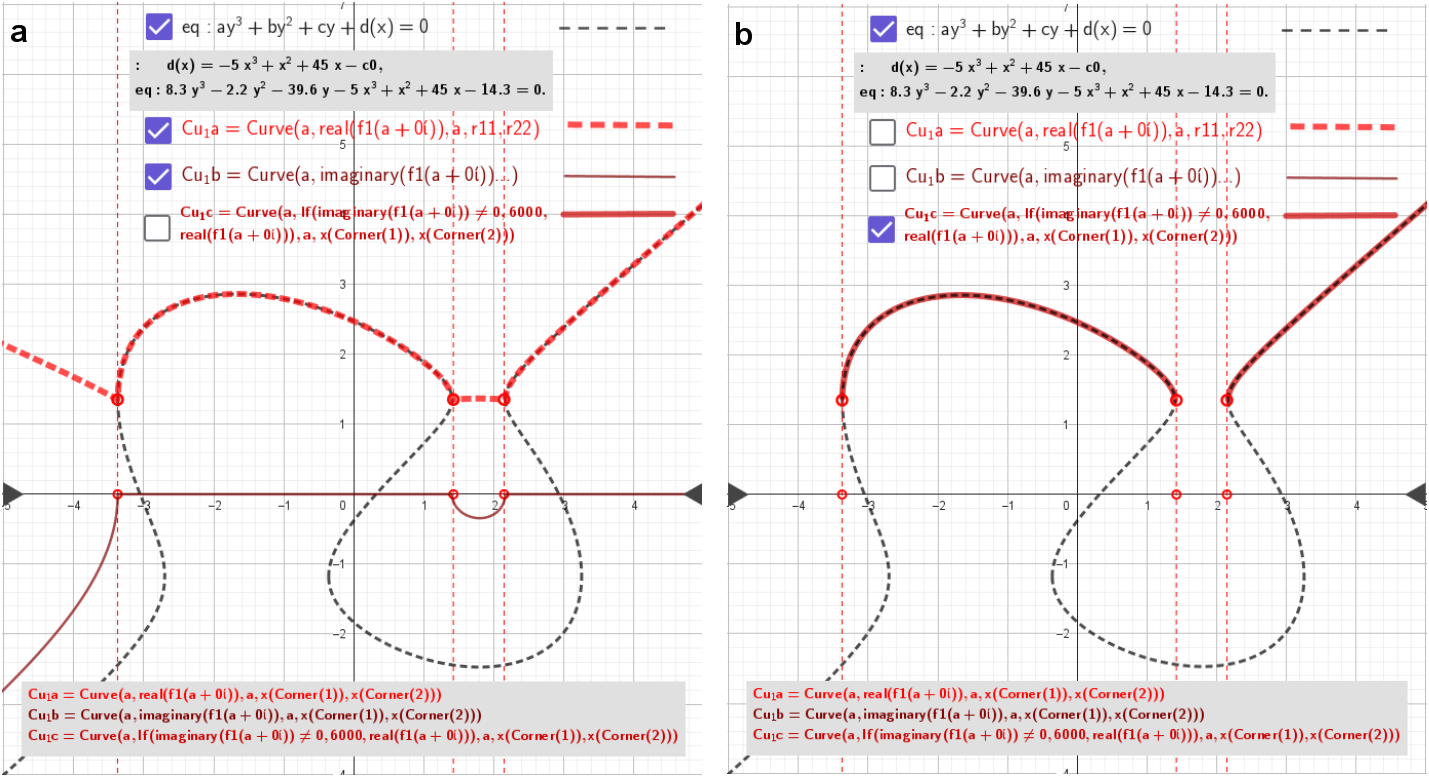
Images: An example of finding explicit equations for curves using complex functions that make up an implicitly defined cubic curve
[size=85] It should be noted that[br]-The curve of the implicit initial cubic equation is generally composed of 3 known exact solutions - complex functions: f1(z), f2(z) and f3(z). Each of them consists of a real and an imaginary part: f(z)=Re(f(z))+ί*Im(f(z)).[br]-The parts of these curves, which form the initial cubic curve of the implicit function, correspond to the regions in the complex plane: ΔZ=[z1,z2], where their imaginary parts are absent: Im(f(z))=0 for z∈ΔZ.[br][/size] [size=85]Images made with [url=https://www.geogebra.org/m/wfng7kbw]applet[/url].[/size]
[b]Example #2 [br]eq: 8.3 y³ - 2.2 y² - 39.6 y - 5 x³ + x² + 45x - 14.3 =0[/b]
f1(z)

f2(z)
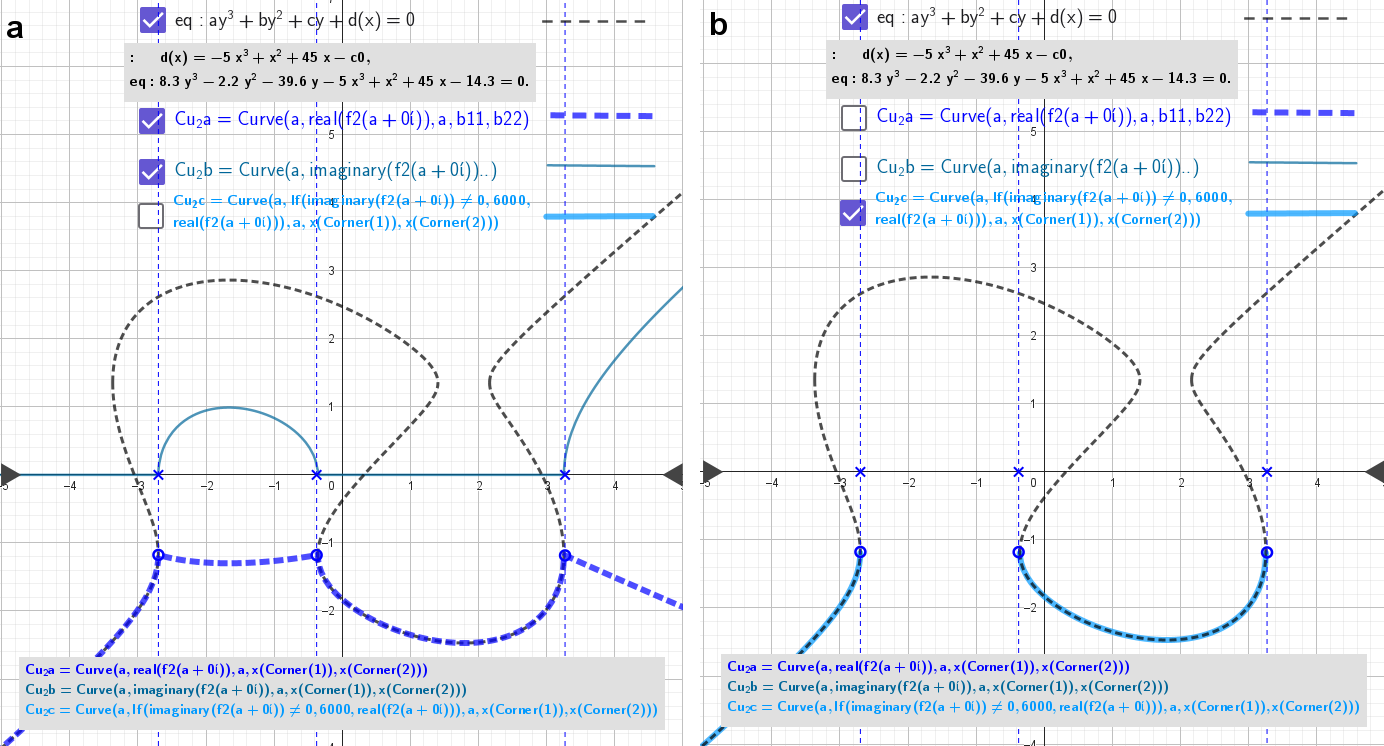
f3(z)
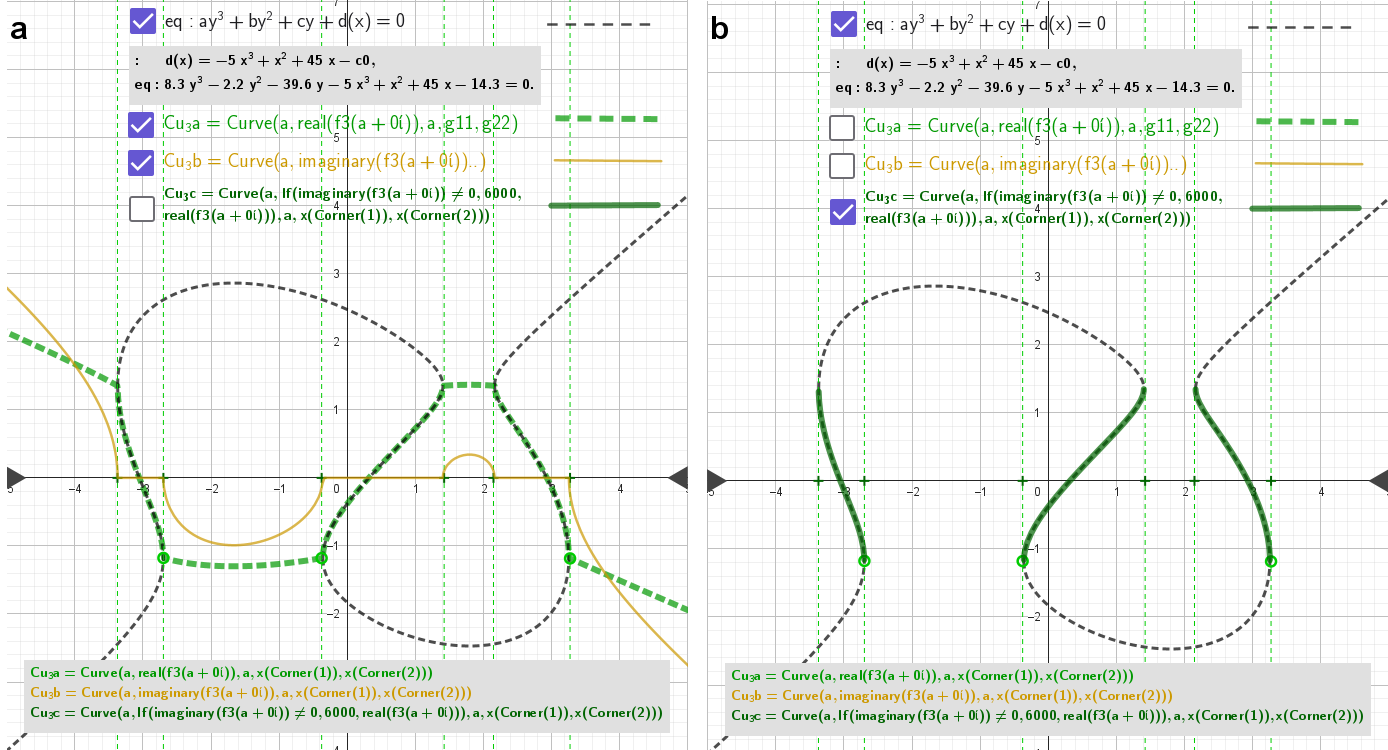
Example #2 The resulting representation of a function given by an implicit formula: eq: 8.3 y³ - 2.2 y² - 39.6 y - 5 x³ + x² + 45x - 14.3 =0
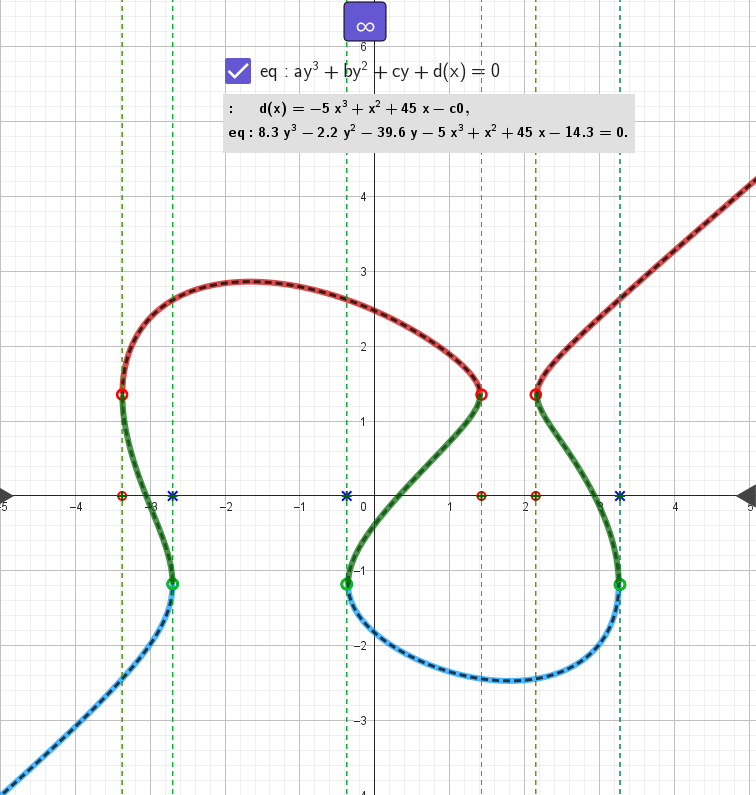
[i][size=85] The resulting representation of the function given by the implicit formula consists of three branches.[/size][/i]
[b]Example #1[br] eq: -4 y³ + 4.2 y² + 36 y - 5 x³ + x² + 45x = 0 [/b]
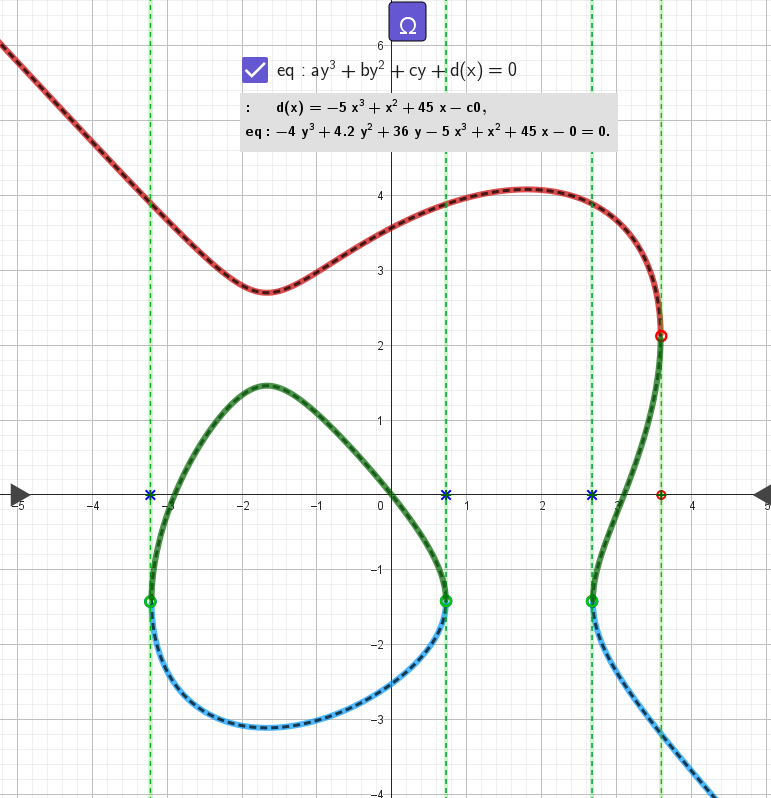
[size=85][i] The resulting representation of the function given by the implicit formula consists of three branches.[/i][/size]
[b] Example #3[br] eq;: -5 y³ - 2.2 y² - 10.5 y - 5 x³ + x² + 45x - 18.7 =0[/b]
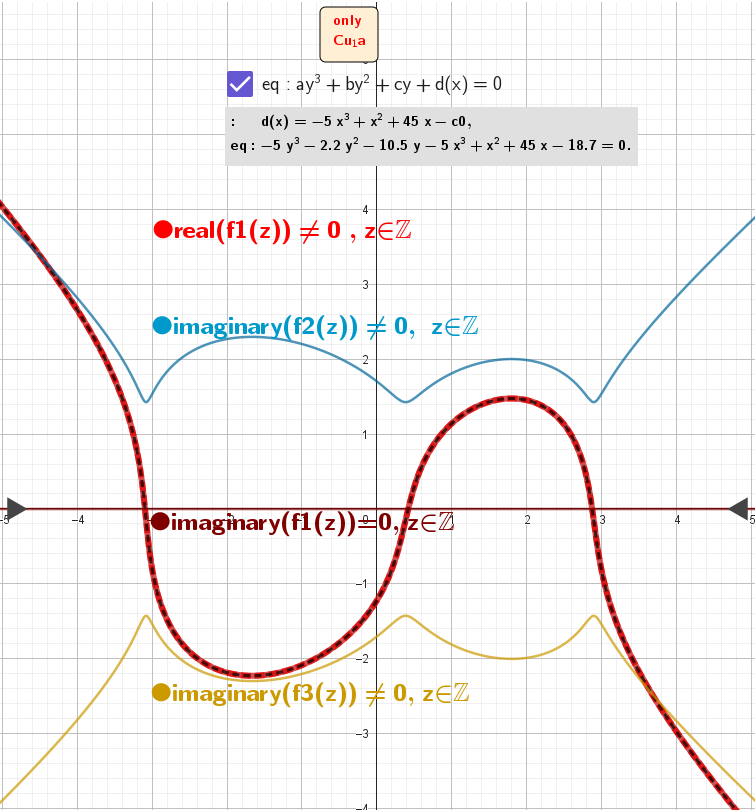
[size=85] The solution of the third-degree Polynomial equation consists of three complex functions: [color=#ff0000][b]f1[/b][/color](z), [color=#0000ff][b]f2[/b][/color](z), [b][color=#38761d]f3[/color][/b](z). Since the [i][b]imaginary part[/b][/i] of the complex functions [color=#0000ff][b]f2[/b][/color](z) and [b][color=#38761d]f3[/color][/b](z) along the entire [b][i]real axis[/i][/b] is [i]different from zero[/i], except for [b][color=#ff0000]f1[/color][/b](z), then the plane curve consists only of it[br][b][color=#ff0000]Cu[/color][sub][color=#ff0000]1[/color][/sub][/b]=[b]Curve[/b](a, If(imaginary([color=#ff0000][b]f1[/b][/color](a + 0ί)) ≠ 0, 6000, real([color=#ff0000][b]f1[/b][/color](a + 0ί))), a, x(Corner(1, 1)), x(Corner(1, 2))), [i]which has its own domain of definition.[br] The resulting representation of the function given by the implicit formula consists of one branch.[/i][/size]